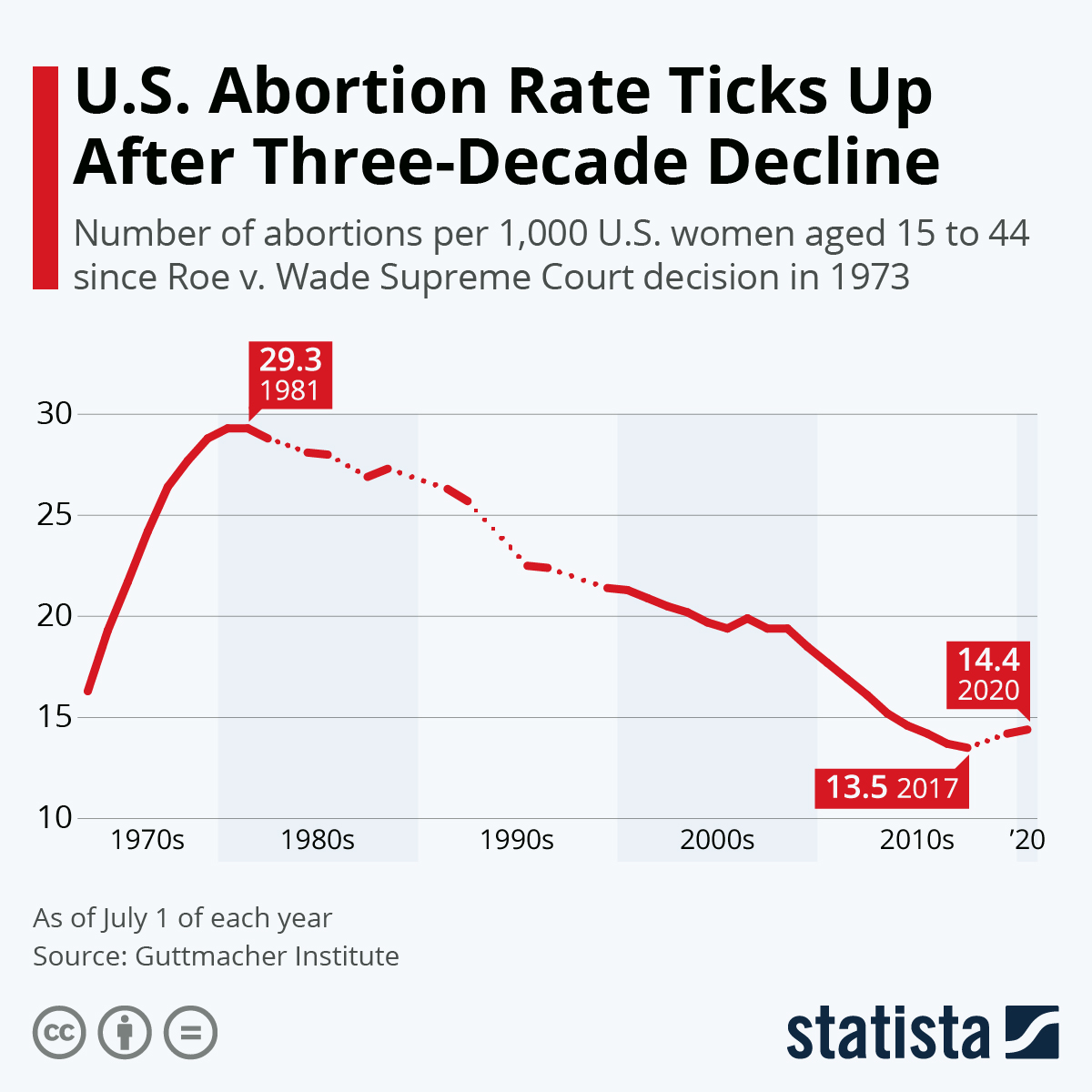Causes.com
| 6.24.22

Roe Overturned: Facts and Figures To Know About Abortion
Did you know these facts about abortion in America?
Do you know the facts on abortion, pregnancy, and maternal mortality in America? Here are some important public health facts and figures to know, in light of the Supreme Court's decision to overturn Roe v. Wade and turn abortion rights over to state governments.
Around one in four women in the U.S. will get an abortion in their lifetime, according to the most recent estimates from pro-abortion rights research group the Guttmacher Institute.
- Around half are women who live below the poverty line, 60 percent already have one or more children, 56 percent are in their twenties, and 58 percent have never had an abortion before.
Nearly half of abortions occur in the first six weeks of pregnancy.
- According to the CDC, a vast majority of abortions occur in the first 13 weeks of gestation — nearly 93 percent in 2019.
- Around 11 percent of abortions are performed after 13 weeks, and less than 1 percent after 21 weeks gestation.
Rates of abortion and pregnancy have decreased overall since Roe.
- In 2020, abortion rates reversed a downwards trend and increased 8 percent since 2017. From 2017 to 2020, abortions rose by 12 percent in the West, 10 percent in the Midwest, 8 percent in the South, and 2 percent in the Northeast.
- However, overall abortion and pregnancy rates have declined. Abortions peaked in the decade after Roe, but have since fallen to lower rates than they were in 1973.
- Pregnancy rates among women aged 24 or younger reached their lowest recorded levels in 2017.
- Pregnancy rates in 2017 were higher among younger people in the South and Southwest compared to other regions of the U.S. And according to the New York Times, recent declines in abortion rates have been larger in states with widespread abortion access and increased access to contraception and other health care.
Pregnancy and childbirth are between 30 to 45 times riskier to a woman’s health than having an abortion. The U.S. stands out as having the highest maternal mortality rate compared to other wealthy countries.
- There are roughly 0.4 to 0.6 maternal deaths per 100,000 abortions in the U.S.
- In 2020, the U.S. maternal mortality rate was 23.8 deaths per 100,000 live births, an increase from 17 deaths per 100,000 live births in 2018. The overall rate in 2020 almost doubles when looking at non-Hispanic Black women, with 55.3 deaths per 100,000 live births.
- Comparatively, per capita — Canada has 8.6 maternal deaths, the U.K. has 6.5 deaths, Germany and the Netherlands have roughly three deaths, and Norway has 1.8 deaths.
Women living in states with more restrictive abortion laws are found to be more likely to die while pregnant or shortly after giving birth.
- According to a CNN analysis of 2018 CDC data, states likely to ban abortion have maternal mortality rates 47 percent higher than the national rate, on average.
- A 2020 study found that reducing the proportion of Planned Parenthood clinics by 20 percent increased the maternal mortality rate by 8 percent, and states that enacted legislation to ban abortions based on gestational age saw a 38 percent increase in maternal mortality rates.
- States with more restrictive abortion laws also tend to have less access to quality maternal care — hospitals with obstetric care, birth centers and certified nurse midwives, health care providers and health insurance coverage — increasing health risks associated with pregnancy.
- A study from the University of Colorado Boulder estimated that a nationwide abortion ban would lead to a 21 percent increase in pregnancy-related deaths. Although no nationwide abortion ban is currently being considered, many states are looking to enact widespread, if not complete, bans on abortions — raising implications for even more increased maternal deaths in those states.
- While maternal mortality rates can be attributed to a number of factors, Studies continuously find that comprehensive reproductive and sexual education, contraceptives, and abortion access are essential to reducing unwanted pregnancy, abortion rates, and pregnancy-related deaths.
A majority of Americans believe abortion should be legal in all or most cases.
- The most recent Pew Research Center polling data shows that 61 percent of Americans believe abortion should be legal in all or most cases. Within that category, 19 percent believe the procedure should be legal in all cases with no exceptions, while 36 percent believe it should be legal in most cases.
- Among the 37 percent of Americans who believe abortion should be illegal, only 8 percent believe it should be illegal with no exceptions whatsoever.
-Casey Dawson
The Latest
-
 Changes are almost here!It's almost time for Causes bold new look—and a bigger mission. We’ve reimagined the experience to better connect people with read more...
Changes are almost here!It's almost time for Causes bold new look—and a bigger mission. We’ve reimagined the experience to better connect people with read more... -
 The Long Arc: Taking Action in Times of Change“Change does not roll in on the wheels of inevitability, but comes through continuous struggle.” Martin Luther King Jr. Today in read more... Advocacy
The Long Arc: Taking Action in Times of Change“Change does not roll in on the wheels of inevitability, but comes through continuous struggle.” Martin Luther King Jr. Today in read more... Advocacy -
 Thousands Displaced as Climate Change Fuels Wildfire Catastrophe in Los AngelesIt's been a week of unprecedented destruction in Los Angeles. So far the Palisades, Eaton and other fires have burned 35,000 read more... Environment
Thousands Displaced as Climate Change Fuels Wildfire Catastrophe in Los AngelesIt's been a week of unprecedented destruction in Los Angeles. So far the Palisades, Eaton and other fires have burned 35,000 read more... Environment -
 Puberty, Privacy, and PolicyOn December 11, the Montana Supreme Court temporarily blocked SB99 , a law that sought to ban gender-affirming care for read more... Families
Puberty, Privacy, and PolicyOn December 11, the Montana Supreme Court temporarily blocked SB99 , a law that sought to ban gender-affirming care for read more... Families

 Climate & Consumption
Climate & Consumption
 Health & Hunger
Health & Hunger
 Politics & Policy
Politics & Policy
 Safety & Security
Safety & Security
